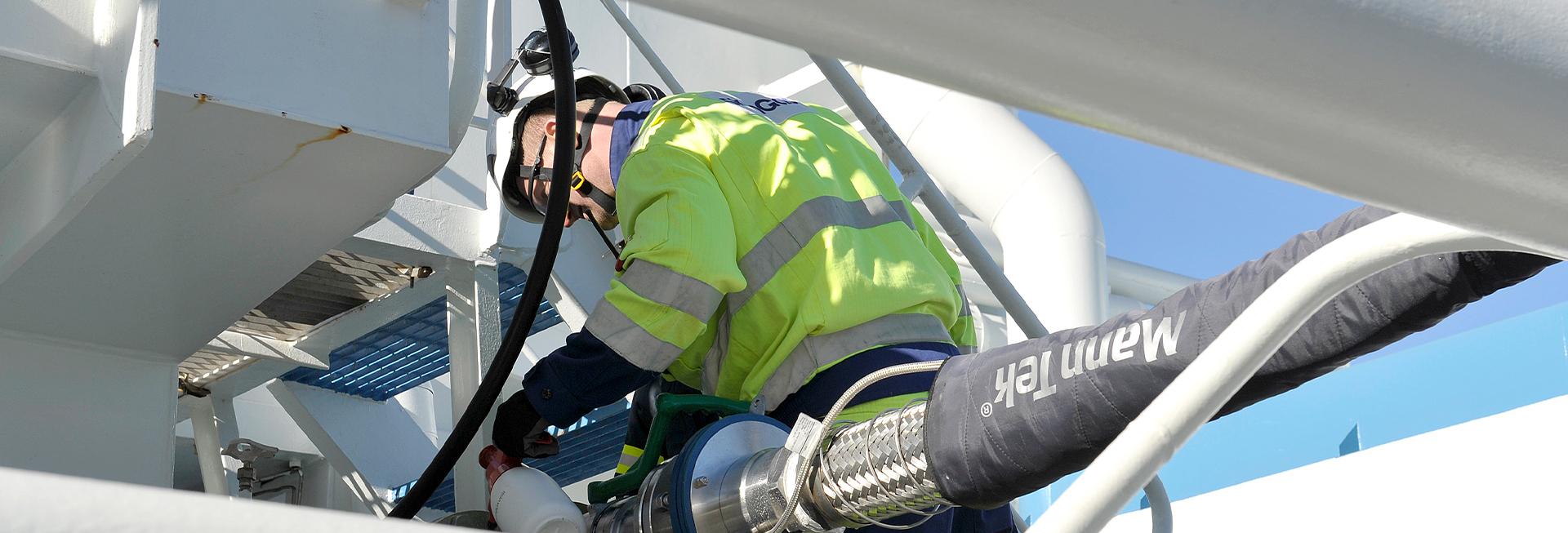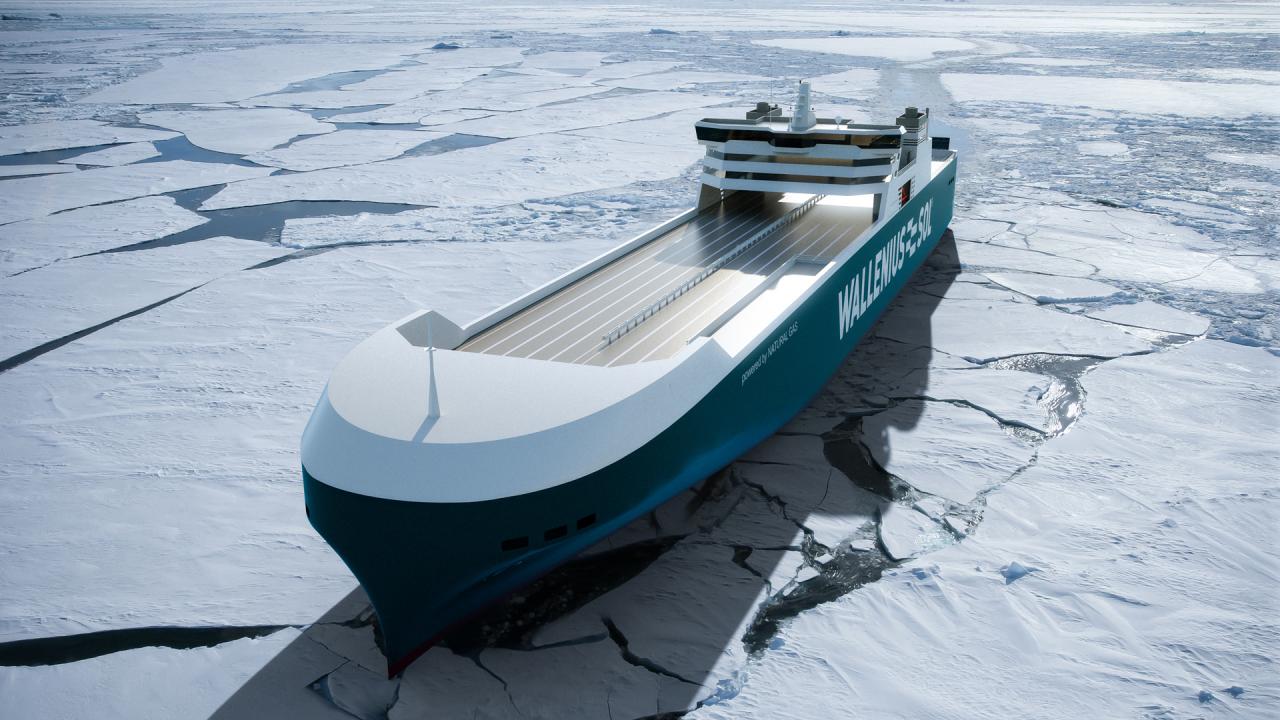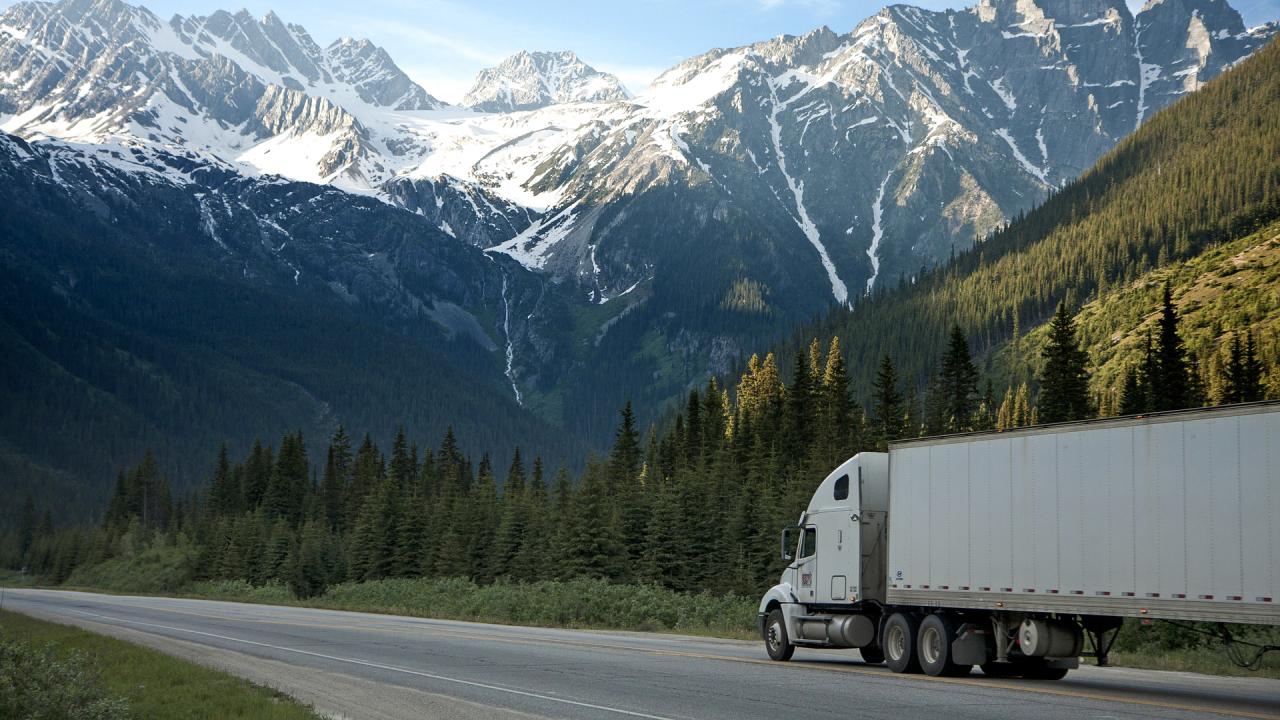Biogas – the road to fossil-free shipping?

Its circular production method makes biogas a hot alternative fuel on the road to fossil-free shipping. Despite challenges with production volumes and methane passing unburned through engines, experts share a positive view of biogas.
Shipping is under great pressure to phase out fossil fuels. Especially since the International Maritime Organization (IMO) agreed to reduce greenhouse gas emissions from international shipping by at least 50 per cent by 2050, compared with 2008.
We have previously discussed alternatives such as LNG, e-methanol, hydrogen and sails, and now it’s time to take a look at biogas.
100 per cent renewable energy
Biogas is a renewable energy source produced by the digestion of organic materials such as food waste, wastewater or residues from the agricultural and food industries. Also, forest biomass can be used through gasification. Like liquefied natural gas (LNG), Liquefied biogas (LBG) consists mainly of methane, but it also has very low net carbon dioxide emissions. This means it can be mixed in proportions ranging from 1 to 100 per cent in ships’ engines currently running on LNG, thus reducing CO2 emissions.

Large-scale use of biogas
Even though biogas is an attractive deal in terms of the circular economy, a major issue is whether production will be able to meet demand.
Researchers at Chalmers together with the IVL Swedish Environmental Research Institute have analysed precisely this issue in a project entitled “Is liquid bio-gas part of the solution to greenhouse gas emissions from shipping?”
“Since we don’t know the extent to which shipping will be fuelled by LNG, or how use on land will complete in the future, it’s difficult to say whether there will be enough biogas for all shipping. However, our analyses show that the probable requirement for Swedish shipping will more than likely be partially or wholly met by biogas produced in Sweden,” says Project Manager Karl Jivén, IVL.
But according to Maritime Forecast 2050, decarbonisation is seen to be especially challenging for oceanic traffic, which generates 80 per cent of global maritime CO2 emissions.
“Even though our research focused on short sea shipping and domestic Swedish traffic, there is nothing to prevent the same kind of development in global terms. Manure and food waste are available in every country, so there’s potential,” says Karl Jivén.

Methane slip
A side effect known as methane slip in the combustion of LNG and biogas occurs when a certain amount of methane passes unburned through an engine. Today there are technical solutions in production plants on land that make sure all methane is burned, but having such an oxidation unit aboard ship is not quite so easy, according to Anders Hjort, biogas expert at IVL:
“Methane slip is a problem, but not an insurmountable one. The thermal oxidisers used on land are difficult to have aboard ship, but there are more expensive, more energy-efficient ship’s engines available today that should be able to reduce methane slip. Engine manufacturers are putting a lot of effort into this area right now.”
Whether we use LNG or LBG, the methane molecule remains the same, but the life cycles of the raw materials differ.
“It takes around 30 days to produce biogas, but many millions of years to produce LNG. The manure in a slurry pit or a stable yard also gets digested and produces methane, but it dissipates immediately to atmosphere. Were we instead to collect the manure to make biogas, we could recover the methane from the digestion process and create a fuel able to replace fossil emissions. That’s a win-win,” says Karl Jivén.
In Addition

What’s being done to increase the supply of biogas?
Gasum is one of the world’s biggest suppliers of gas to shipping. We asked Jacob Granqvist, Vice President Maritime, what is being done to make sure LBG supply meets demand.
What part do you think biogas will play in tomorrow’s fuel mix?
“Together, LBG and LNG are enormously important for reducing emissions. Right now, there are no other alternatives for large-scale shipping. We don’t need to run on 100 per cent LBG to achieve future emission standards, just a small percentage of biogas is enough. Before we reach the point where biogas has a greater share of the fuel mix than LNG, synthetic methane will arrive on scene.”
What’s the limiting factor?
“The drawback for the user is that biogas is more expensive than natural gas, and the biggest bottleneck is the investment required for more production facilities. Large-scale production of biogas is relatively new, and today raw material exceeds production capacity.”
So, what’s being done to increase the supply of biogas?
“There’s a great deal of investment in Europe right now. I know that many of the major LNG terminals are looking at liquefying biogas to form LBG, while both large and small operators are all building their own plants. Gasum is investing in several new biogas plants and in 2024 our biogas portfolio will total 4 TWh. Liquefied biogas is easy to distribute across large areas, but more large-scale production is required for it to be profitable. Our biogas plant in Nymölla is a typical example of industrial scale LBG production, where we take in process water from Stora Enso’s pulp and paper mill.”
Is a circular economy possible for shipping?
“Absolutely. We’re holding interesting discussions with a number of shipping companies based on making biogas from their wastewater and other bio-waste. This will allow shipping to achieve a circular economy by running on its own waste. It’s also possible to earmark biogas. Take a newspaper that wants a fossil-free end product; we can deliver precisely the amount of biogas needed to transport the newsprint they use. In this way, a shipping company’s customer can also share in the cost of CO2-neutral freight.”



